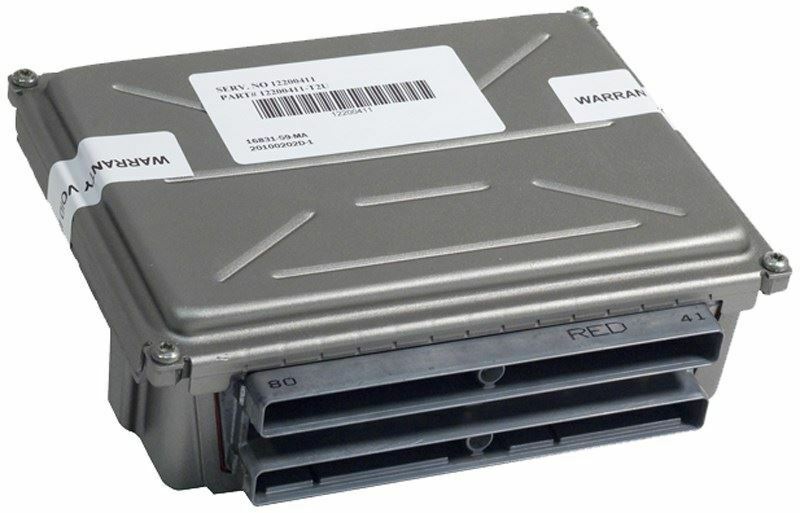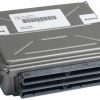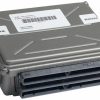Restore Your Truck’s Heartbeat and Drive with Confidence
Is your trusty 2004 GM truck or SUV feeling a bit under the weather? A flickering check engine light, rough idling, or frustrating stalling can quickly turn a reliable workhorse into a source of daily stress. These are often tell-tale signs that the vehicle’s brain—the Engine Control Module (ECM)—is failing. This isn’t just an inconvenience; it affects performance, fuel economy, and your peace of mind. Our pre-programmed ECM, service number 12586242, is the definitive solution to bring back the smooth, dependable power you rely on.
Warning Signs Your ECM Needs Attention
A faulty engine computer can manifest in numerous ways, often mimicking other component failures. If you’re experiencing any of the following, it’s time to consider the ECM as the root cause:
- ✔ Persistent Check Engine Light: The light stays on even after addressing other potential issues, often with communication-related Diagnostic Trouble Codes (DTCs) like U0100.
- ✔ Erratic Engine Performance: Unexplained stalling, hesitation during acceleration, rough idling, or sudden power loss can point directly to a confused ECM.
- ✔ Poor Fuel Economy: If you’re suddenly making more trips to the gas station, the ECM may not be managing the fuel-to-air ratio correctly.
- ✔ No-Start Condition: The engine cranks but refuses to start, indicating the ECM isn’t properly controlling the ignition or fuel systems.
- ✔ Transmission Shifting Problems: The ECM works with the transmission controller; a failing unit can cause harsh or delayed shifts.
The Ultimate Solution for Your 2004 Sierra 3500 ECM
Forget the hassle and expense of a dealership visit. We take the guesswork out of the repair by providing a module that is a direct-fit replacement, programmed specifically for your vehicle. Simply provide us with your Vehicle Identification Number (VIN) after purchase, and our technicians will flash the unit with the latest, most stable GM software updates. This ensures that all factory parameters for your specific engine, transmission, and options are perfectly loaded, making the installation process as straightforward as possible.
Expert Technician’s Tip
One of the biggest hurdles with ECM replacement is programming. An improperly programmed module can cause more problems than it solves. By having us program the ECM to your VIN before shipping, we eliminate that risk. This process ensures the module communicates flawlessly with your vehicle’s other systems, like the anti-theft (Passlock/VATS) and transmission controllers, for a true plug-and-play experience that gets you back on the road faster.
Guided Installation to Restore Peace of Mind
You don’t need to be a master mechanic to complete this job. With basic hand tools and a little patience, you can have your truck running right in no time. For most compatible trucks like the Sierra and Silverado, the ECM is located under the hood, on the driver’s side, often beneath the battery tray.
- Safety First: Begin by disconnecting the negative terminal of your vehicle’s battery to prevent any electrical shorts.
- Locate and Access the ECM: On most trucks, you will need to remove the battery to access the ECM mounted below it. On other vehicles like the Trailblazer or Envoy, it’s typically located next to the airbox.
- Disconnect the Old Unit: Carefully unplug the wiring harness connectors from the old ECM. There are typically three large connectors with locking tabs. Use a small flathead screwdriver to gently release the tabs if needed.
- Swap the Modules: Unbolt the old ECM from its mounting bracket and set it aside. Mount your new, pre-programmed ECM in its place, ensuring it is secure.
- Reconnect and Finalize: Plug the wiring harnesses firmly into the new ECM until they click into place. Reinstall the battery and connect the negative terminal. In many cases, a simple security relearn procedure (turning the key to ‘On’ for 10-15 minutes) may be required to sync the new ECM with your keys.
Tailored Fit for Your Ride
This ECM is a direct replacement for service numbers 12586242, 19299226, and 89017738. It is guaranteed to be compatible with the following 2004 models. Please verify your vehicle and engine size to ensure a perfect match.
- Buick Rainier: 5.3L
- Cadillac Escalade, ESV, EXT
- Chevrolet Avalanche 1500
- Chevrolet Silverado 1500, 2500, 3500: 6.0L Gasoline
- Chevrolet SSR
- Chevrolet Suburban 1500, 2500: 6.0L
- Chevrolet Tahoe
- Chevrolet Trailblazer EXT: 5.3L
- GMC Envoy XL, XUV: 5.3L
- GMC Sierra 1500, 2500, 3500: 6.0L Gasoline
- GMC Sierra Denali
- GMC Yukon, Yukon XL 1500, Yukon XL 2500: 6.0L
- Hummer H2
- Isuzu Ascender: 5.3L
This unit replaces a wide range of original service IDs, including YFKD, YFKF, YFKH, YFKJ, YFKX, YFXL, YFXM, YFXN, YFXP, and YHTN.
Frequently Asked Questions
Do I need to do any additional programming after installation?
No dealership programming is required. Because we flash the module to your VIN, it’s ready to go. You may need to perform a simple security relearn procedure, which typically involves leaving the key in the ‘On’ position for 10-15 minutes. We include instructions for this easy process.
How do I provide my vehicle’s VIN?
After you complete your purchase, simply send us a message with your 17-digit VIN. Our team will use this to load the correct GM software for your specific vehicle configuration before we ship the part to you.
Is this a guaranteed fit for my truck?
Yes, if your vehicle is listed in our compatibility chart and your original ECM has one of the listed service numbers (like 12586242 or 89017738), this is the correct part for your vehicle.
What if my problem isn’t fixed after installing the new ECM?
While this ECM resolves the vast majority of related issues, it’s important to ensure your vehicle’s wiring and sensors are in good condition. Our expert support team is here to help you diagnose any further issues if the problem persists.
What tools are required for the installation?
For most compatible trucks, you will only need basic hand tools, such as a socket set (typically 8mm, 10mm, and 13mm sockets) and a small flathead screwdriver to help with the connector tabs. The entire process can usually be completed in under an hour.


